|
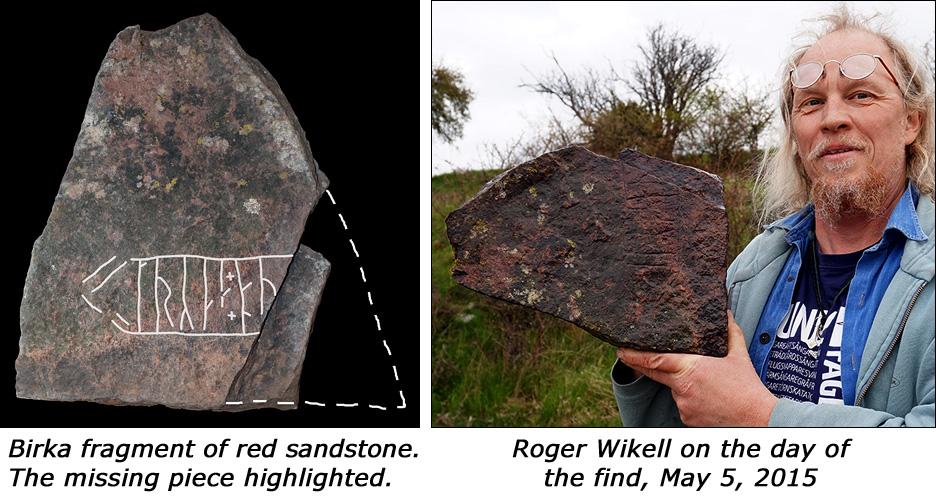
The runestone was found in the spring of 2015
in the middle of what was once the city of Birka. The
runestone was located in one of the many cultivation mounds
where remains of the city's streets, fireplaces and house
foundations are found.
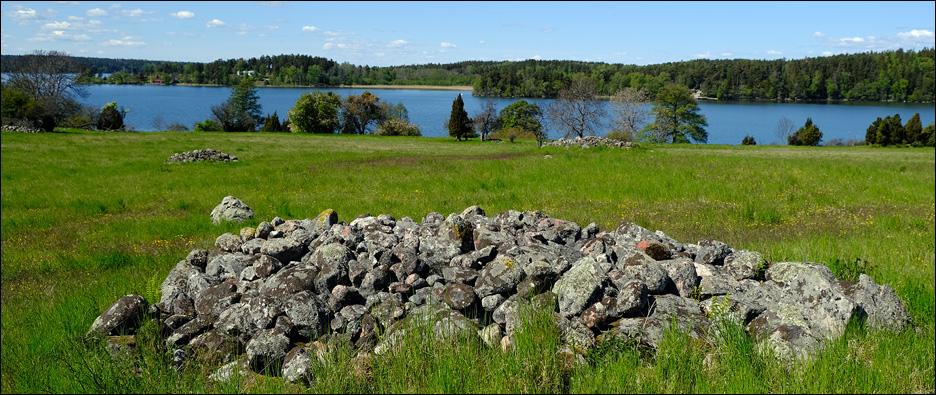
A cultivation mound is a collection of
stones built up over a long period of time by the farmer
when he worked the land. Stones that came to light during
plowing were moved to an unusable piece of land where they
eventually formed a cultivation mound.
In the black soil (the city of
Birka) there are meny and large large cultivation mounds. Me
and my friend Roger Wikell realized that these were largely
remnants of the city of Birka's paving stones, fireplaces,
stairs and perhaps roads etc.
On May 5, 2015, we visit an ongoing
excavation and decide to also look a little closer at the
cultivation mounds. Perhaps we could see some traces of the
long-lost city of Birka.
And we did!
We saw a large amount with smaller parts of red sandstone
where several had clear traces of having been used as e.g.
grindstone. At the edge of a centrally located mound, a
piece of sandstone could be seen sticking out of the ground
and in the light of the spring sun, thin carved lines could
be seen... we had found a rune stone on Birka!
We marked the find site and took the
runestone to the ongoing archaeological excavation. I walked
a little ahead of Roger and met the archaeologists who had
just started their "fika" break, they jokingly asked me:
- did you find any rune stones?
(They know me and my great passion for rune stones). Just as jokingly, but still
honestly, I could answer:
- Yes, but only a small runestone...
They smiled and laughed a little and then
continued their fika break.
Then I got an idea!
I asked if I could take a picture when they had their coffee
break, which was perfectly fine, "click".
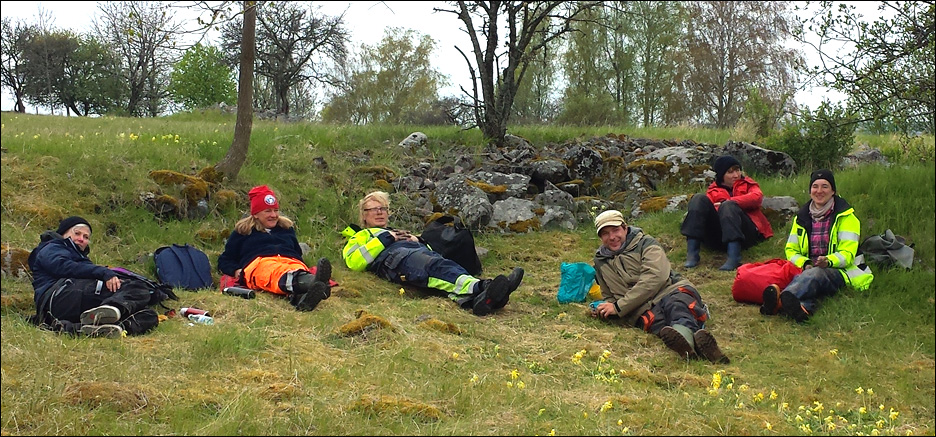
My idea was to take one picture before and one
after the runestone was shown by Roger to see if it made a
difference... and it did :-)
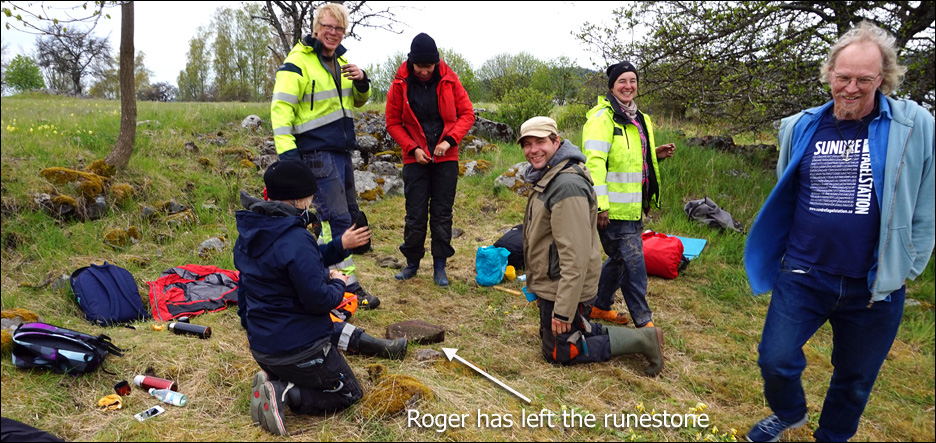
But the archaeologists had also made a
sensational find that day, they had just found the bronze
dragon head that matched the mold found in the 19th century.
The same dragon head as Birka's logo.
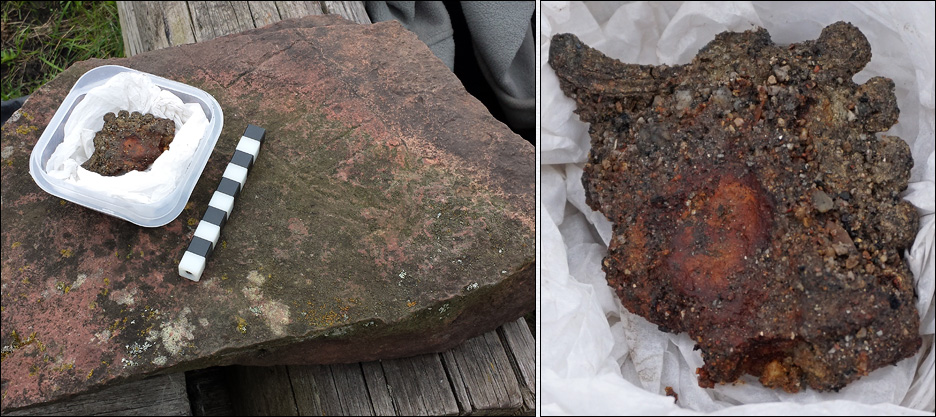
Here lies the newly found bronze dragon head
on the newly found runestone, both found on the same day and
only within an hour.
What an amazing day :-)
Details on the runestone
The missing part should be able to be found
near the find site as that fracture surface appears to be of
a later date. Maybe it broke when the runestone was thrown
onto the cultivation mound? The missing part may have
another 2-3 runes.
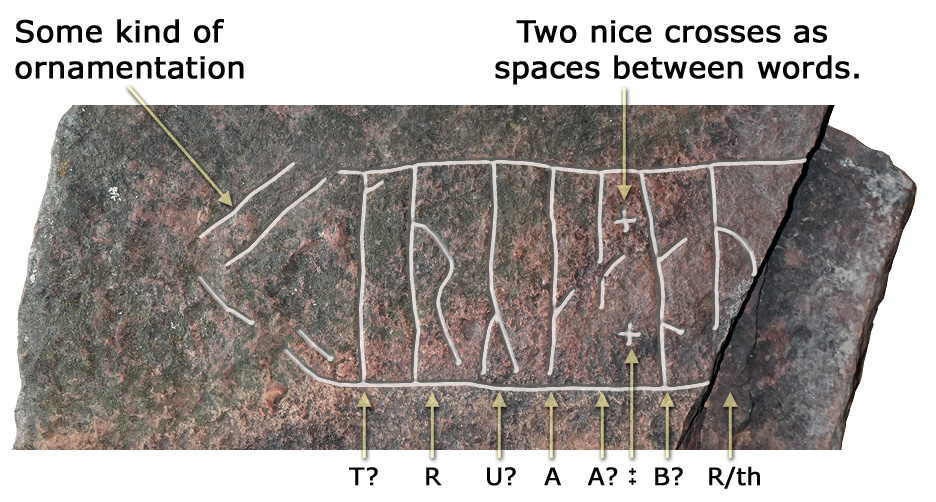
Stone of red sandstone that
can be easily split into thin fine slices. Sandstone is also
much easier to carve than granite.
The fact that it easily
splits into slices makes it popular as a building material
such as stepping stones, paving stones, standing by the
fireplace, etc.
I'm guessing that it belonged
to one of the houses on Birka and that someone there took
the opportunity to practice rune carving when it was still
there as a threshold stone or similar.
The cutting grooves are very
narrow and the lines a little uncertain.
Both + + are nice and well made.
Compare with similar carvings at Birka and Adelsö
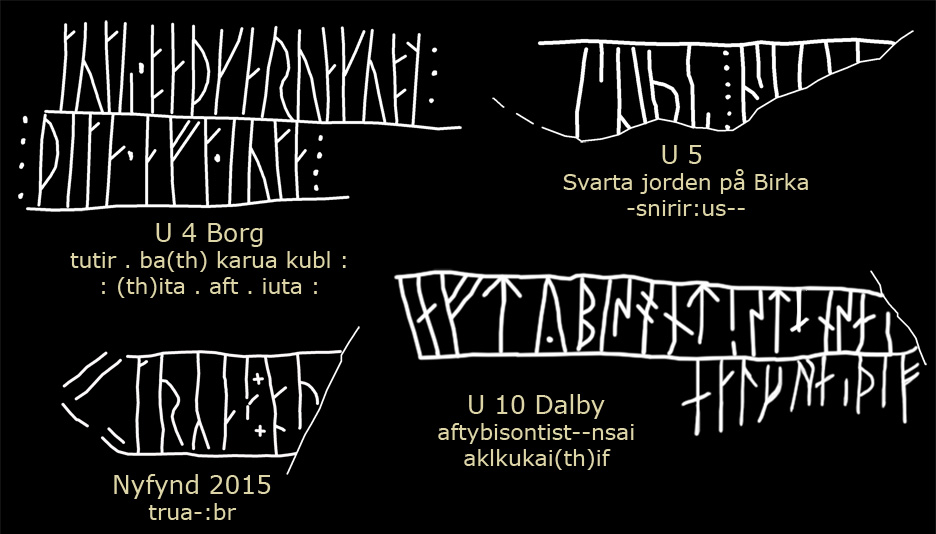
There are not that many runic carvings that
are older than the year 1000, but at Birka there seems to
have been an unusually large number. Runestones this old are
more difficult to decipher, partly because there are few to
compare with and partly because the runes have a different
shape.
On the National Antiquities
Office's website "Runes"
you can find the best interpretations of the runic
inscriptions from Birka and Dalby on Adelsö.
To Runor about U 4 at Borg
Daughter asked to make a memorial,
this after Juta
To Runor about U 5, new find 1936
-sni(r)iR (u)s----
To Runor about U 5b, new find 2015
Tru-a : B- ??
To Runor about U 10 from Dalby, Adelsö
Eft Ybi the son stone
sa--- (+ a name?)
Visit the runestone?
The rune stone has been on Gotland since
autumn 2015 for cleaning.
In the spring of 2019, I was told that it
would come back and perhaps be placed in the museum at
Birka.
In the summer of 2023, it was
not in the museum and, as far as I know, it has not yet been
examined by runologists or published....
A very frustratingly long time!
To be continued....
Links
Google map >
Find the runestone
Populär Arkeologi > No. 1 in 2016
Newspaper about the runestone, only in Swedish
Kalle Runristare > Large pictures and information in
Swedish
Contact:
kalle@runristare.se
If you want to be of help or have a question.
All runestones in the
Runestone Park
We start from the north and go clockwise
U 11 - Adelsö, Hovgården
The King's Runestone in Hovgården, Adelsö
U 3 - Hovgården, Alsnöhus
Found during an excavation in 1916
U 1 - Adelsö church
Former threshold stone to the sacristy. Now built
into the wall in the sacristy.
U 2 - Adelsö
church
Destroyed by fire around 1660. Former threshold stone
to the church.
U 10 - Dalby Adelsö
Found in 1920 at Stora Dalby, northern Adelsö. Now
built into the wall of the sacristy, Adelsö church.
U 6 - Björkö village on Birka
Several fragments as a puzzle. Now in the museum at
Birka.
U 5b - Birka
2015
(New find 2015)
2024.03.10 Not yet documented or published.
Sö 141b
- Aspa bridge (Sö Fv1948;289)
New find in 1937 with the name Svitjod (Sweden).
Sö 179
- The Gripsholm runestone
Mariefred, the most famous of the Ingvars runestones.
U 887 - Skillsta runestone
One of the world's most beautiful runestones.
Vs 29 - Sala parish church
The runecarver Livsten's masterpiece.
U 1125
- The old man in Krogsta
1500 year old rune stone carved with the older runes,
the Old Norse runes.
|





